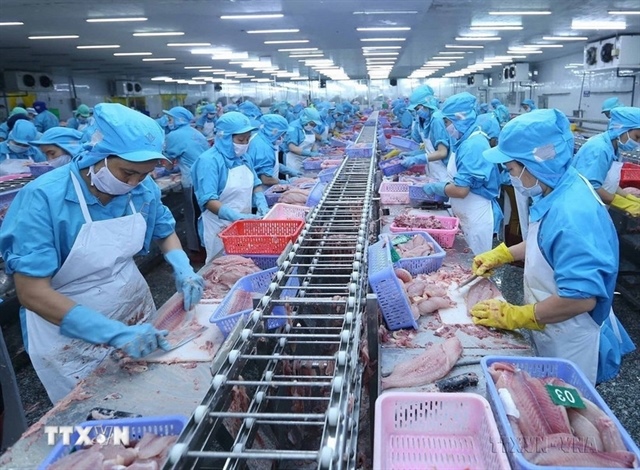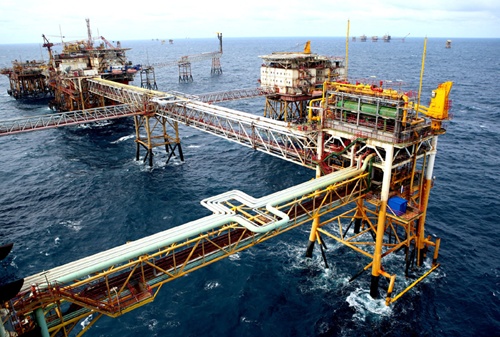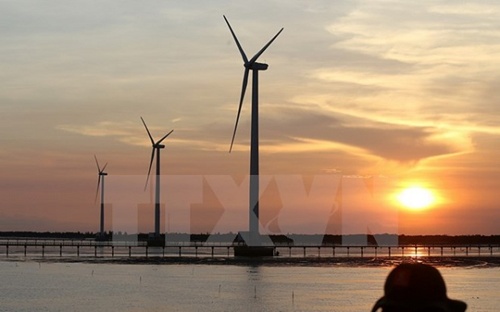Reduction of greenhouse gas in the construction industry
Reduction of greenhouse gas in the construction industry
Over the past many years, the Vietnamese government, ministries, and sectors have been implementing Nationally Appropriate Mitigation Actions (NAMAs).
Specifically in late 2012, in Decision No.1775/QD–TTg, the prime minister approved a scheme on managing greenhouse gas (GHG) emissions and activities on trading certified emissions reductions (CERs) in the international market.
NAMAs are regarded as an effective solution to reducing GHGs and a good opportunity for developing nations to respond to climate change. NAMAs can also help these nations receive technical and financial support and technology transfered from the United Nations Framework Convention on Climate Change’s (UNFCCC) Bali Action Plan issued in 2007.
Massive GHG emissions from economic and social activities, including construction, have been the biggest contributor to global climate change.
In developed nations such as South Korea and Japan, NAMAs have been deployed since 2007, putting a particular stress on energy-saving solutions in the industrial, transport, construction, and forestry sectors, with a target of reducing GHGs by about 30 per cent by 2030.
In Vietnam, the construction industry’s NAMAs have been carried out in numerous activities, including policy compilation and enactment, national action plans, and improvement of awareness in all projects of enterprises and localities directly or indirectly responsible for GHG emission reduction.
According to the Ministry of Construction, Vietnam has been receiving financial and technical support from the international community in its NAMA implementation. For example, a number of Nordic nations are facilitating projects to support Vietnam in putting NAMAs in practice in the cement industry. Japan is seeking an opportunity to cooperate with Vietnam in building NAMAs of all kinds, starting pilot projects to give sectors better understanding and experience.
Accordingly, the project on capacity building and supporting the compilation of an action plan on GHG reduction in the cement industry, financed by the Nordic Development Fund, will be implemented within two years. Currently, the project’s design stage has been completed and the consultancy stage is about to be carried out.
Within this project, experts collected data and assessed cement plants potential in GHG reduction. They have also introduced emission baselines, systems on measurement, reporting, and appraisal under international standards. They have simultaneously valued costs, hurdles, and solutions about policies used for making NAMAs in the Vietnamese cement industry.
In order to successfully deploy NAMAs, it is necessary to have a detailed GHG inventory system and an emission baseline. It is also necessary to build a national appraisal system and a national process about measurement, report, and verification.
Vietnam is seen as one of the nations in the world most affected by climate change. Thus, in its climate change policies, the country has always attached great importance to and taken concerted actions in responding to climate change.
Energy plays a crucial role in all nations’ development. Supplying sufficient energy is a strategic issue to all nations, including Vietnam. Thus the promulgation of a set of standards named QCXDVN 9:2005 on the effective use of energy in buildings, the National Target Programme for Energy Efficiency and Conservation adopted by the prime minister in 2006, and the Minister of Construction’s recent decision on adopting schemes on implementing the energy-saving programme for buildings has significantly contributed to saving energy.
The calculation and selection of solutions for saving energy in buildings are critically important and there should be effective guidelines for them. This will help greatly reduce energy consumption and operational costs, and ensure fire prevention, while benefiting investors, the environment and the whole nation as well.
The Vietnamese government has stressed ensuring a sufficient supply of energy and utilising energy sources effectively, while decreasing negative impacts on the environment.
Furthermore, in order to strengthen the global competitiveness of Vietnam’s industrial and commercial sectors, it is necessary to further update the country’s systems on environmental management, energy saving, and water resources management via the ISO 14000 guidlines. There has also been a rise in the demand for energy audit of buildings. Thus, it is necessary for Vietnam to have guidelines for energy audit.
In fact, one of the challenges in calculating usage needs in buildings (for air-conditioners, lighting systems, and other equipments) is the lack of measurements in buildings.
The optimisation of power supplying sources can create a big opportunity to save energy costs. It is necessary to ensure that consumed energy will not exceed the fixed standards identified under the power factor. If the numeric value of the capacity coefficient fails to meet the requirements, it is necessary to estimate the required capacity and costs for installing capacitors so as to increase this coefficient.
Additionally, it is possible to use alternative solutions for lighting. For example, light can be allowed in buildings as a result of the improvement of construction areas or the change in the ways of opening or closing windows or curtains. In another case, equipment can be replaced with more effective lighting system, light-emitting diode (LED) products, or high-efficiency lamp reflectors.
Activities about auditing and seeking solutions all mean that energy is used for three purposes, including air conditioning (occupying 40-50 per cent of buildings’ consumed energy), lighting (30-40 per cent), and other equipment (5-10 per cent).
Currently in Vietnam, actions related to NAMAs have just begun reaching the stage of regulatory activities and most of the actions are inpreparation, with no specific projects having been implemented. It is due to the limitations in finances, human resources, and the way actions are implemented. For example, the project on building capacity and supporting the construction of an action plan on GHG reduction in the cement industry is stuck at the consultancy stage.
Clearly, it is of critical importance to implement NAMAs. However, in the current Vietnam, not only the construction industry, but many other important industries will need a long time for their NAMAs to be carried out.




















